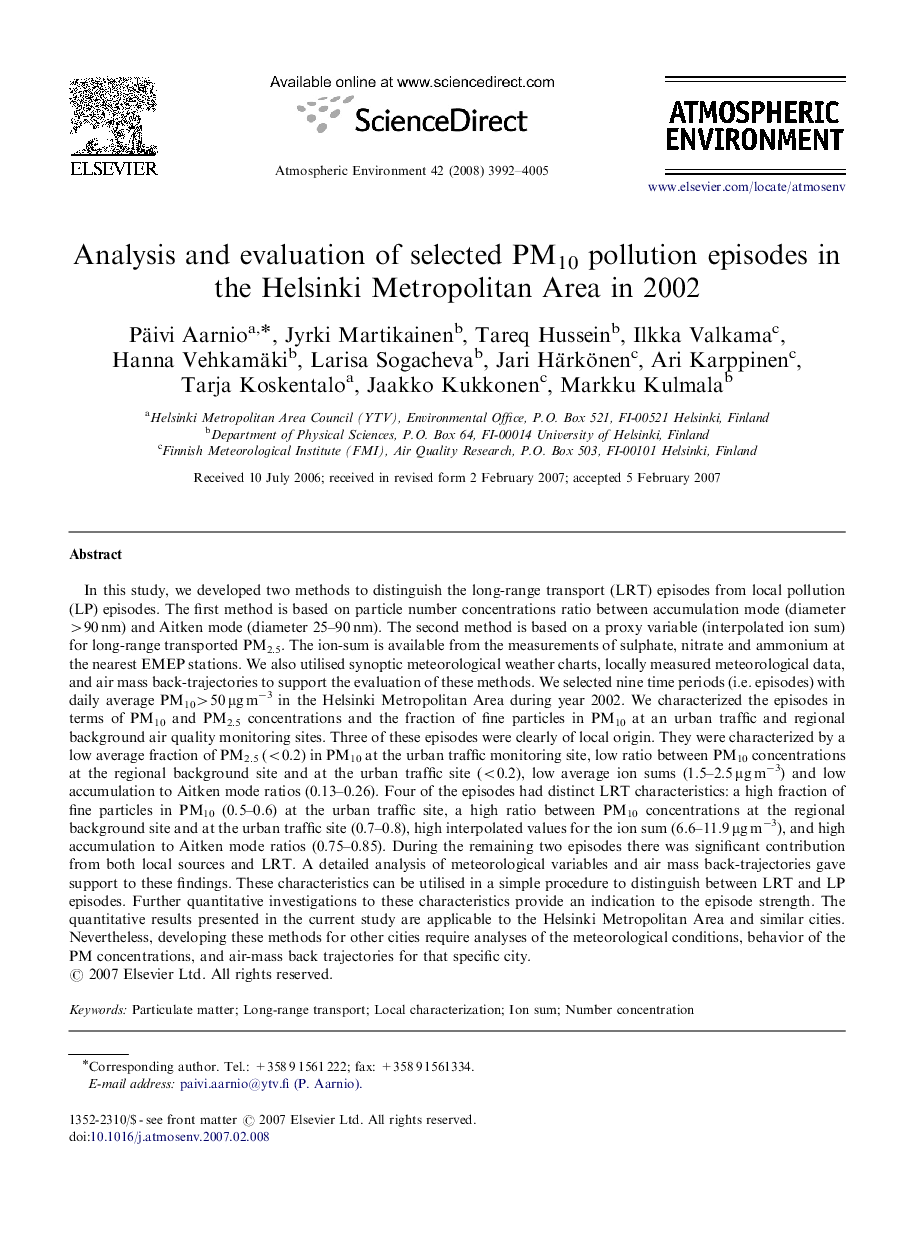| Article ID | Journal | Published Year | Pages | File Type |
|---|---|---|---|---|
| 4442999 | Atmospheric Environment | 2008 | 14 Pages |
In this study, we developed two methods to distinguish the long-range transport (LRT) episodes from local pollution (LP) episodes. The first method is based on particle number concentrations ratio between accumulation mode (diameter >90 nm) and Aitken mode (diameter 25–90 nm). The second method is based on a proxy variable (interpolated ion sum) for long-range transported PM2.5. The ion-sum is available from the measurements of sulphate, nitrate and ammonium at the nearest EMEP stations. We also utilised synoptic meteorological weather charts, locally measured meteorological data, and air mass back-trajectories to support the evaluation of these methods. We selected nine time periods (i.e. episodes) with daily average PM10>50 μg m−3 in the Helsinki Metropolitan Area during year 2002. We characterized the episodes in terms of PM10 and PM2.5 concentrations and the fraction of fine particles in PM10 at an urban traffic and regional background air quality monitoring sites. Three of these episodes were clearly of local origin. They were characterized by a low average fraction of PM2.5 (<0.2) in PM10 at the urban traffic monitoring site, low ratio between PM10 concentrations at the regional background site and at the urban traffic site (<0.2), low average ion sums (1.5–2.5 μg m−3) and low accumulation to Aitken mode ratios (0.13–0.26). Four of the episodes had distinct LRT characteristics: a high fraction of fine particles in PM10 (0.5–0.6) at the urban traffic site, a high ratio between PM10 concentrations at the regional background site and at the urban traffic site (0.7–0.8), high interpolated values for the ion sum (6.6–11.9 μg m−3), and high accumulation to Aitken mode ratios (0.75–0.85). During the remaining two episodes there was significant contribution from both local sources and LRT. A detailed analysis of meteorological variables and air mass back-trajectories gave support to these findings. These characteristics can be utilised in a simple procedure to distinguish between LRT and LP episodes. Further quantitative investigations to these characteristics provide an indication to the episode strength. The quantitative results presented in the current study are applicable to the Helsinki Metropolitan Area and similar cities. Nevertheless, developing these methods for other cities require analyses of the meteorological conditions, behavior of the PM concentrations, and air-mass back trajectories for that specific city.
